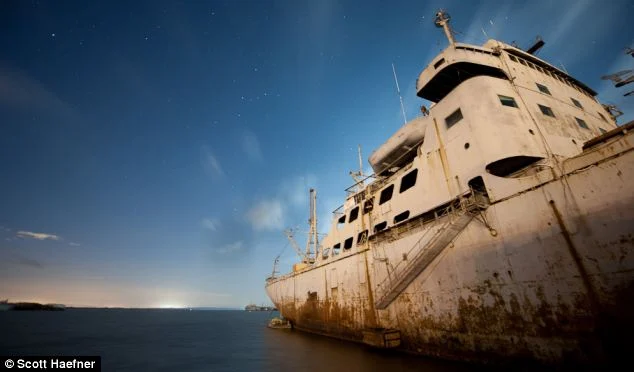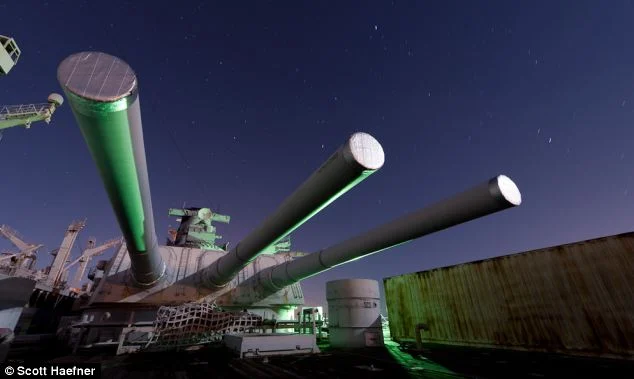There are a number of aging Navy ships uncermoniously rotting away in a bay near San Francisco. Their decay is saddening to many because the ships fought courageously in World War Two.
The ships are being towed, one by one, for scrapping. In a few years, the last remnants of America’s glory days will be gone forever.

According to The Daily Mail, a group of illegal “squatters” gained access to the war machines by rowing at night for two years past security and climbing aboard the ships. They sleep secretly on board for days at a time.
Their breathtaking images prove that their efforts were well worth it.
Some of the ships served the US in four wars – WWII, Korea, Vietnam and Desert Storm. They are now stationed in Suisun Bay, 30 miles north east of San Francisco.

There used to be close to 400 of the mothballed ships, which have been out of action for a decade.
15 of the ships have already been scrapped and the whole fleet will probably be gone by 2017.
Scott Haefner led the team of photographers; they gained access to the historical relics over a two year period.
It took them months to get ready for their voyages. They had to analyze tidal patterns and security rotations, and despite their numerous close calls they were able to spend many days at a time on board.
“As news began to mount that the ships would finally be towed out for scrapping, we knew we had to act fast if we wanted to explore and document them,” Haefner said.

“We had fantasized for years about getting aboard and had to overcome numerous obstacles just to get to the ships.
“To get across the channel, we acquired a small, inflatable raft that was just big enough for the three of us and our gear, along with a small motor powered by a car battery.”
A lot of times the raft had holes in it and on one occasion they desperately had to keep pumping up the boat while they were still on the water.
“On subsequent trips, we spent the entire weekend aboard the ships, each time on a different row. Because they are tethered closely together in rows, we had many ships to explore—enough to keep us occupied for a week or more if the excursions were not so draining and we did not have jobs pulling us back,” Haefner explained.
“One of the first orders of business each trip was finding a place to sleep. The ships are often stinky from mold, mildew and decay, so a room with windows that opened was preferable. We typically slept in the captain’s room where we found comfy couches, convertible beds, lots of space, and plenty of light during the daytime. We slept during the day after shooting and exploring all night. Around noon, we would wake up and eat and explore the bowels of the ships.”






